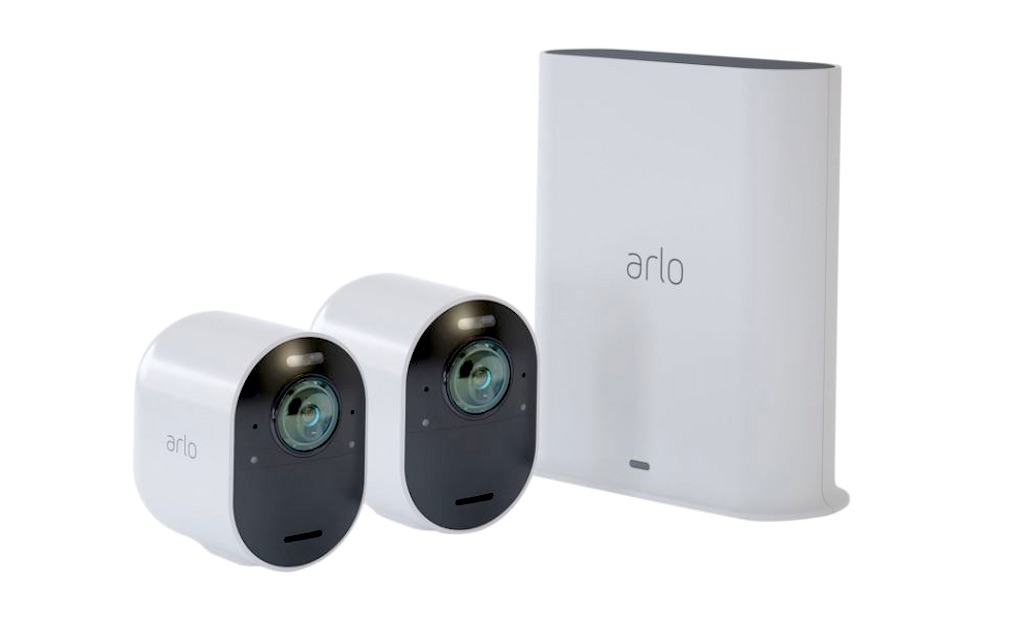
Are you sometimes confused by the range of different image resolution qualities in the various Smart Home Security Cameras out there? When looking to buy a new camera, it’s often a daunting task to figure out the meanings of all the different specs there are these days, and image resolution quality is one of—if not the, most important of these considerations. It’s one thing if you’re a professional, or even an amateur, photographer, but if you’re the typical consumer, you might need a little bit of help in this area. And that’s just what I’m going to try to provide in this blog article. Read on if you’re interested in learning about the different camera resolution quality levels there are today and to try and understand which resolution might best suit your own photography needs.
Note that the image at the top of the blog depicts the Swann Enforcer Wired 8-CH 1TB DVR Security System with 6 Bullet 4K Cameras, which you can learn all about on the Best Buy Canada website.
Is anyone still using 720p image resolution?
I’m not really going to talk much about 720p here today as this resolution quality is fuzzy at best and is increasingly becoming a thing of the past. But it at least bears mentioning as there was a time (not so long ago) when most of us would have been (and likely were) fairly impressed with 720p resolution. As with all things technological, time marched along and vast improvements were made. For this reason, 720p has been all but left behind at this point in time, and you’re not likely to find much, if anything, boasting this resolution quality today.
1080p resolution is a considerable improvement
The next level up, and one of the most common (and far better examples) of camera resolution today is 1080p. This resolution, often called Full HD, is much clearer than 720p. Note that the “p” in 780p, 1080p, etc. stands for progressive scan (AKA non-interlaced scanning), which is simply a formatting term describing the method by which image data is stored and displayed. The preceding number (i.e., 1080) describes the number of vertical lines of data that are being displayed in the image or on a display screen such as a TV. Thus, the higher the number preceding the p, the higher the resolution and the better the image quality.

Also worth noting is that the higher the resolution of a camera, TV screen, or any other device wherein resolution is an appropriate measure of image quality, the greater the number of pixels per inch (PPI) the device’s images will be displayed in. As pixels are very tiny portions of an image that display colour, detail, and other important information, the greater the number of pixels per inch, the better the device’s resolution. What all of this basically means is that while 1080p is a fully acceptable image resolution quality today, it’s far from the current best.
The Google Nest Cam WiFi Indoor IP Camera is a prime example of just this type of camera. If you’d like to learn all about this 1080p Full HD camera that’s pictured above and designed specifically for indoor use, you can do so on its Best Buy Canada product page.
2K is much, much better
For many, things really begin to get interesting at an image quality of 2K or higher. Also called QHD (Quad High Definition), 2K resolution features a p rating of 1440p, meaning that its vertical resolution features 1440 lines of progressive scan. The reason it’s called 2K, however, has to do entirely with the horizontal resolution that generally accompanies 1440p of vertical resolution.

For instance, due to the typical aspect ratios of wide-screen TVs being 1.78:1 (or 16:9), the horizontal measurement for 2K cameras and TVs above 2000p designates a 2K model (i.e., a typical 2K resolution across both dimensions might be 2560×1440). As you can see, the 2K designation comes from the horizontal measurement of the progressive scan, though the same resolution might also be expressed as QHD 1440p. Of course, all most consumers really need to know is that a camera or other device with 2K resolution has superior image quality and clarity over models with 720p or 1080p resolution.
For information on the Arlo Pro 3 Wire-Free Indoor/Outdoor 2K Floodlight Security Camera, which is the cool looking camera shown above, check out its product page over at Best Buy Canada and read all about it.
But 4K is the current king of image resolution quality
If truly sharp focus is what you require, then nothing beats the image quality of a camera that shoots in 4K resolution, which is often also referred to as UHD (Ultra High Definition). At 2160p, 4K resolution makes for super clear video and photographs that reveal an incredible amount of detail, which is exactly what you want when trying to protect your home against trespassers and potential intruders. In fact, 4K is the current gold standard in the home security camera market.

It’s also the production standard among professional cinematographers, meaning it delivers a level of image quality that’s suitable for the big screen. And if it’s good enough for serious filmmakers, it’s certainly good enough for Smart Home security use. There’s really no better way to protect your home or place of business than with smart security cameras featuring 4K UHD resolution.
One excellent example of a 4K security camera system is the Arlo Ultra Wire-Free Security System with 2 Bullet 4K HD Cameras, which is shown in the image above. You can learn all about this serious home security solution by visiting its Best Buy product page via the supplied link.
A few brands to consider
When choosing a Smart Home Security Camera, there are plenty of brands and models to choose from. Among the most popular options are Arlo, D-Link, Swann, and Ring (which also specializes in doorbell cameras), as well as numerous other brands. The brands I have listed here are among the most established and respected in the space, though new contenders like Cableshark and Defender are constantly emerging.
If you’re on the lookout for a new security camera or system, it is highly advisable to do some research into all the other considerations you may find important beyond just image resolution. For instance, things like wired versus wireless models, whether or not they’re weatherproof for outdoor use, and whether or not they come with any sort of paid subscription storage and/or monitoring services, among many other consideration.
Luckily, right here on the Best Buy Canada Blog is the perfect place to do that! Just hit up the search box and get to work learning about all the latest and best smart security cameras and related products and services. Good luck!



